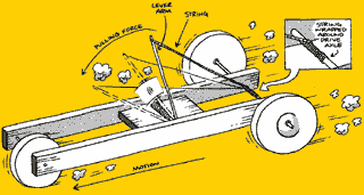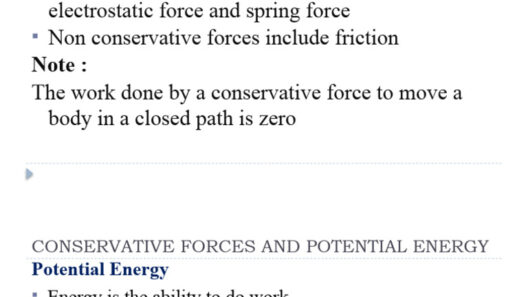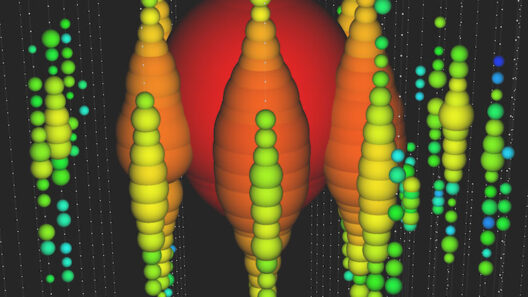Energy conservation is a fundamental principle in physics, and it often manifests in playful, engaging ways, as seen in the captivating world of mousetrap cars. These miniature vehicles are not just toys; they serve as exemplary models to illustrate the principles of energy transfer and conservation. But how is energy conserved during a mousetrap car run? This exploration will delve into the dynamics of energy transfer, dissecting each stage of the process while posing the question: how can we optimize energy conservation in our tiny mechanical creations?
At the heart of the mousetrap car’s operation is the mechanism of energy conversion. It begins with the potential energy stored in the taut spring of the mousetrap. This potential energy is the result of physical tension, a direct correlation with the distance the latch is pulled. The greater the distance, the more potential energy is available for conversion. When released, this potential energy transitions into kinetic energy, propelling the car forward. This transition marks the first crucial step in energy conservation.
Theoretically, when the mousetrap is triggered, it releases energy in one explosive motion. However, in practice, the race of energy transfer is not without challenges. Various forms of resistive forces, such as friction and air resistance, come into play, acting as impediments to the efficient conversion of energy. The wheels of the mousetrap car might not rotate freely; they can drag against the surface or be obstructed by debris, leading to energy loss in the form of heat. Consequently, a pertinent challenge arises: how can one minimize these resistances to create a more efficient energy transfer system?
One solution to this challenge lies in optimizing the components of the mousetrap car. Selecting lightweight materials, for instance, reduces the overall mass, thereby requiring less energy to achieve motion. When crafting a mousetrap car, using high-quality lubricants on the axles facilitates smoother motion, drastically reducing friction. Additionally, ensuring that wheels are perfectly circular and balanced can prevent unnecessary wobbling, maximizing the transfer of kinetic energy from the spring to the wheels.
The design of the car itself plays a critical role in energy conservation. Aerodynamic shapes can significantly reduce air resistance, allowing the car to cut through air more efficiently. Streamlined designs not only provide aesthetic appeal but are also instrumental in conserving energy during the run. The interplay between shape, weight, and material is a delicate balance in optimizing energy conservation. But here again, the question lingers: how can further innovations in design lead to even greater efficiencies?
As the mousetrap car races down its track, it enters the crucial phase of energy dissipation. While potential energy converts into kinetic energy propelling the car forward, other forms of energy, such as thermal energy due to friction, emerge as results of energy dissipation. This transformation underscores a vital tenet of physics: energy cannot be created or destroyed; it can only change forms. The key challenge here is to harness that kinetic energy effectively before it succumbs to friction and wind resistance.
The effectiveness of the mousetrap car hinges on the ratio of useful energy to wasted energy during the run. The efficiency of the energy transfer process can be determined by conducting simple experiments. By measuring how far the car travels in comparison to the energy input from the mousetrap spring, enthusiasts can calculate the efficiency percentages. Such quantitative measurements provide not just feedback for improvements but also insights on broader energy conservation principles, applicable beyond toy mechanics.
As one further delves into the functioning of a mousetrap car, the reflection on energy conservation becomes paramount. It serves as a construct through which larger environmental conversations can emerge. The immutable laws of physics that govern these small models can be extrapolated to understand energy conservation in our everyday lives. From household appliances to industrial processes, the necessity of optimizing energy use and reducing waste remains a pressing concern against the backdrop of climate change.
In a world increasingly dominated by energy consumption, the lessons gleaned from a seemingly simple mousetrap car can inspire innovative solutions for reducing carbon footprints in more complex systems. The practical application of these principles encourages individuals and communities to adopt sustainable practices that reverberate throughout the larger ecological context. Additionally, it sharpens our focus on renewable energy sources, emphasizing that, like the mousetrap car, we too must have efficient mechanisms for energy transfer in our quest for sustainable living.
In conclusion, the journey of a mousetrap car from potential energy to kinetic energy epitomizes the race of energy transfer. It raises profound questions surrounding the efficiency of energy conservation and the implementation of thoughtful designs that mitigate energy loss. By engaging with this challenge, individuals not only enhance their understanding of physics but also contribute positively to the overarching discourse on energy sustainability. As we ponder how to refine these tiny machines, we must also extend that inquiry to our own lives, collectively striving for methods to conserve energy, reduce waste, and protect our environment for generations to come.








